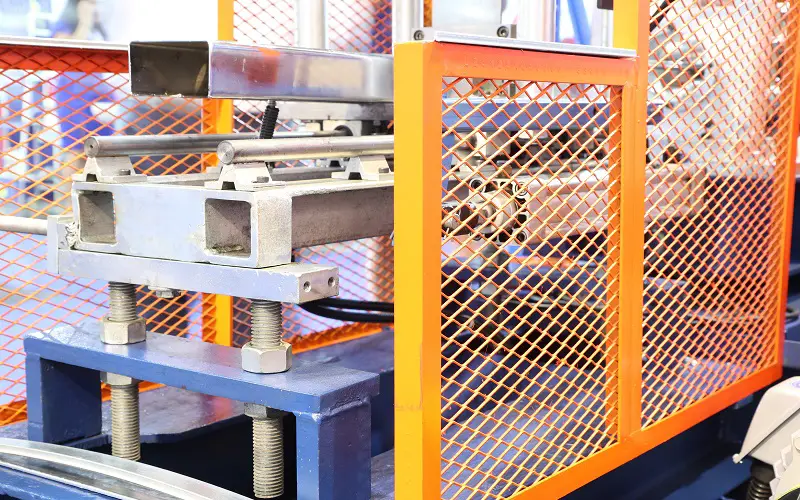Also known as wire cloth or wire fabric, wire mesh is a safety product with different applications. It’s a versatile product relevant in different industries. While it serves different purposes across industries, its specifications make it an indispensable product.
Wire mesh is essential when it comes to risk management. It’s often applied to reduce risks in various industrial settings. The safety in industrial environments that wire mesh provides makes it an indispensable product.
This article discusses how to apply wire mesh in mitigating risks in industries and homes. Furthermore, it details the types needed and how you should go about their deployment.
1. Wire Mesh For Correctional Facilities
Heavy-duty wire mesh is ideal for correctional facilities and other high-security areas. The wire mesh used in fences in correctional facilities serves as a barrier preventing inmates from escaping and unauthorized persons from entering the facility.
Finer wire mesh is also used in barriers to prevent visitors from passing illegal items to inmates. Specifications for this type of barrier call for the T304 stainless steel mesh, otherwise known as A2 stainless.
Similarly, wire mesh is used in psychiatric wards to protect patients from being a danger to others. Other high-level security areas also use T304 stainless steel for heavy-duty security demands.
2. Metal Mesh Guard For Equipment
The use of metal mesh guards is a safety essential in industrial activities like mining and manufacturing.
Metal mesh guards are commonly used to allow visibility and adequate ventilation of industrial equipment but at the same time, restrict access to protect the workers and the machine itself. Heavy machinery, such as those that cut, crush, or grind, needs to be retrofitted with metal mesh guards to protect workers or machine operators from any untoward incident that may result in serious injuries.
Aside from serving as machine guards, metal mesh also serves as a barrier for additional safety and protection. For instance, a wire metal mesh can serve as a net to prevent workers, industrial tools, and other objects from falling through openings.
Furthermore, metal mesh guards discourage workers engaged in mining and quarrying activities from climbing onto heavy equipment.
3. Bushfire Mesh For Buildings And Homes
Bushfire mesh is an efficient way of protecting homes and buildings from fire disasters. A bushfire mesh is usually installed over windows, doors, and air vents to reduce the risk of bushfires by blocking embers from entering the building. Embers flying through windows or other openings have been reported as the major cause of houses catching fire during bushfires.
If you live in a bushfire-prone area, it’s highly advisable to install a bushfire mesh to protect windows, decks, doors, and other openings from radiant heat and embers.
The recommended properties of a bushfire mesh have to be met for adequate safety. It should be made of non-combustible and corrosion-resistant steel with a maximum aperture of two millimeters. When these properties are satisfied, homes and buildings are reasonably protected against ember attack.

4. Mesh Fencing For Farms
Fencing and enclosures are excellent risk management strategies in the agricultural sector. Wire mesh fencing, whether woven or welded, could be used to mark a farm’s boundaries and serve as protection against intruders.
Wire mesh is also ideal for livestock enclosures as they keep the animals safe and secure without making them feel too confined. Such enclosures are durable enough to prevent animals from escaping or wandering off. As long as the mesh opening is appropriate in size, the safety of farm animals is assured.
Crop protection is another application of wire mesh fences on farms. Such fences protect farm produce from being invaded by rodents and other pests.
The good news is that installing a wire mesh fence is more affordable compared to other materials. In addition, this type of fence is easy to install and maintain.
5. Wire Mesh For Refineries
Wire mesh is a versatile product that has important applications in the petroleum and gas industry.
Fine wire meshes are used in oil refineries for filtration purposes. These include sintered wire meshes that serve as sand control screens in oil wells. These sand control screens incorporate several layers of wire mesh, resulting in a monolithic structure that optimizes filtration.
Furthermore, high-grade wire mesh made of T321 and T430 stainless steel is commonly used in oil refinery equipment due to its high performance and resistance to corrosion.
Different types of sintered wire mesh are suitable options for refineries. Examples are those with perforated metal, those with square weave mesh, those made of Dutch weave mesh, and the five-layer sintered wire mesh.
Conclusion
Wire mesh is a versatile product with various applications across industries such as agriculture, manufacturing, mining, and petroleum refineries. It’s essential to risk management because its core applications primarily involve safety and protection. Its affordability and ease of installation also make wire mesh an ideal option not only for industries but also for homes.




